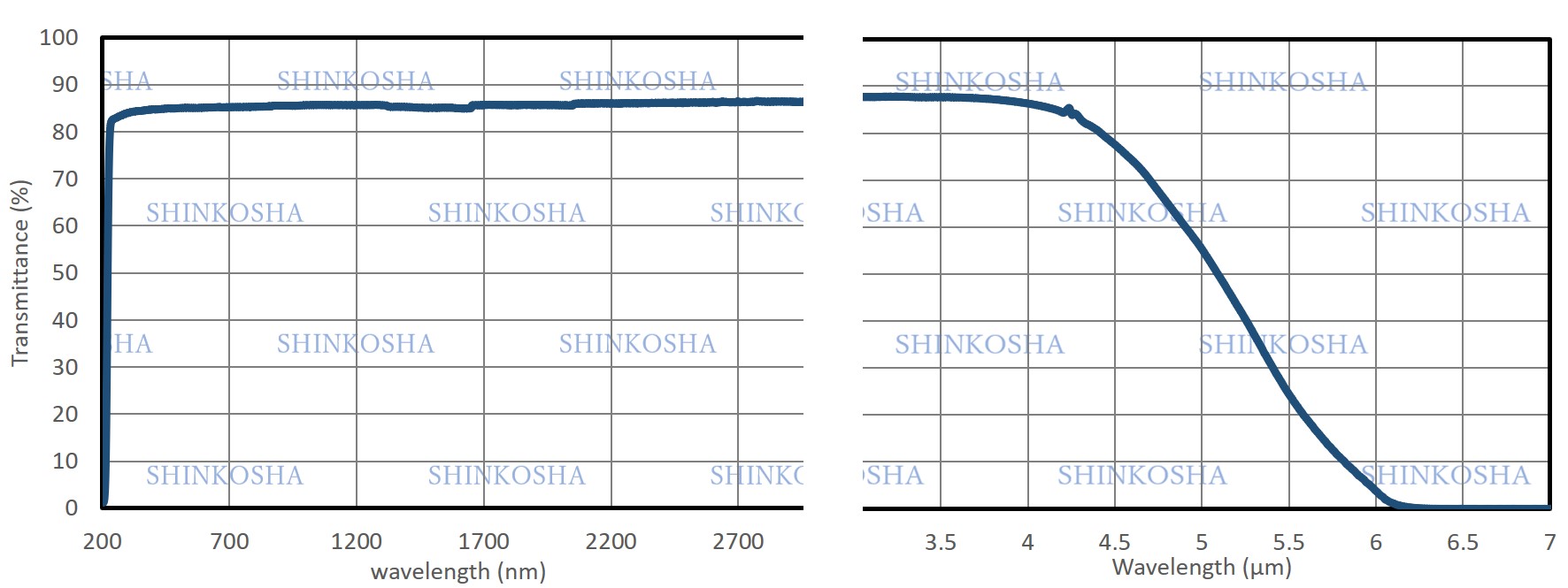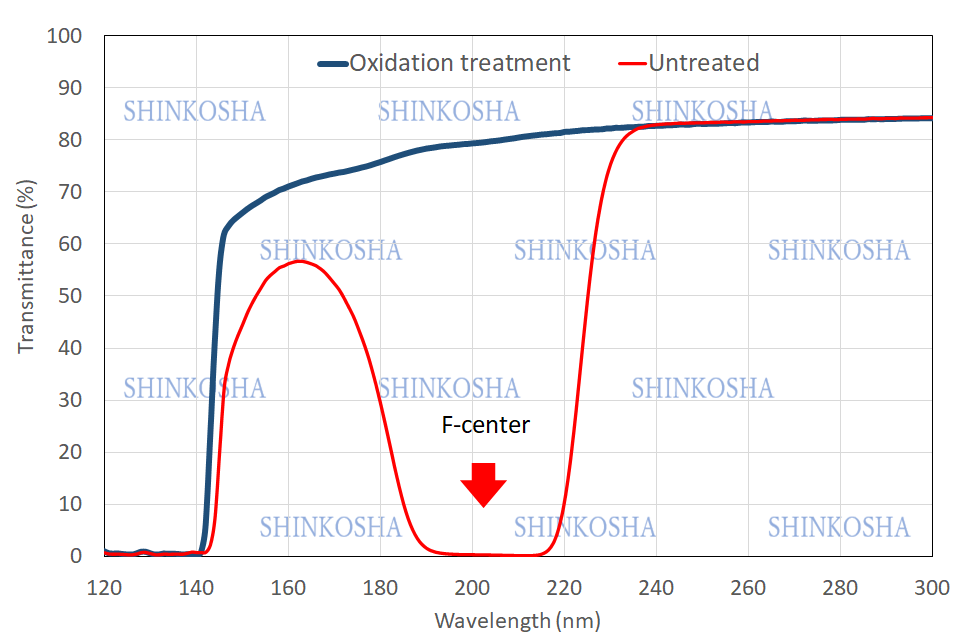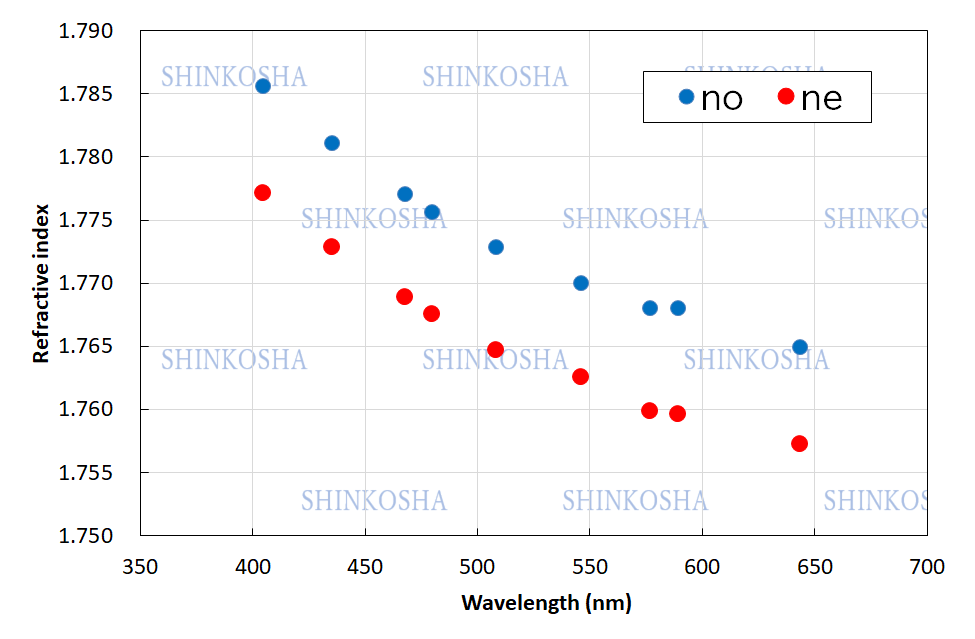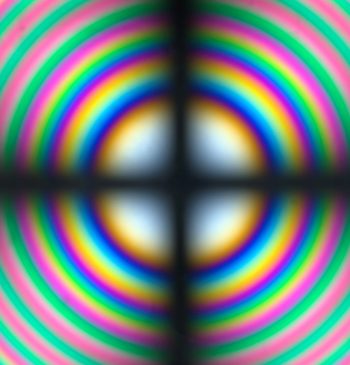Pure sapphire is a colorless and transparent crystal that transmits light continuously from the ultraviolet to the infrared. Since it has stable transmission characteristics especially in the infrared region, it is useful for devices and windows that use infrared light. In recent years, with the maturation of crystal growth technology, large ingots can be obtained, and they are also used as a container for analyzing and storing ‟HAYABUSA2“ return samples because of their low impurity and stable crystallinity.

Typical transmittance of sapphire, showing F-center absorption near 200 nm.

When impurities are added, it is known to develop various colors, and sapphire with chromium (Cr) added develops a vivid red color and is called ruby, which is famous as a gemstone. The ruby laser, which achieved the world’s first laser oscillation, is a solid-state laser using a single crystal ruby.
Sapphire is a single crystal of aluminum oxide (Al2O3), but due to the growth process and subsequent treatment, some of the Al and O may be lost. Particularly in the case of high-purity sapphire, which is mass-produced industrially, the growth of the melt in an environment of over 2000°C tends to create a reducing atmosphere and oxygen defects are easily introduced. It is known that this defect absorbs some light, most notably the absorption around 200nm (F-center).
Sapphire that contains as few oxygen defects as possible can transmit light up to around 150 nm.

After oxygen supplementation, sapphire can transmit up to about 150 nm.
【specimen: c-plane 1.0 mmt】
Sapphire is a uniaxial crystal, and its optical axis is the c-axis 〈0001〉. Therefore, it has birefringence, and birefringence appears when light is incident from a direction at an angle to the optical axis.
When light is incident parallel to the c-axis, the optical axis, the refractive index is limited to only one kind, but when polarized light is used and observed, such as in cross-nicol or conoscopic observation, isogyre can be seen.

Refractive index of sapphire.
